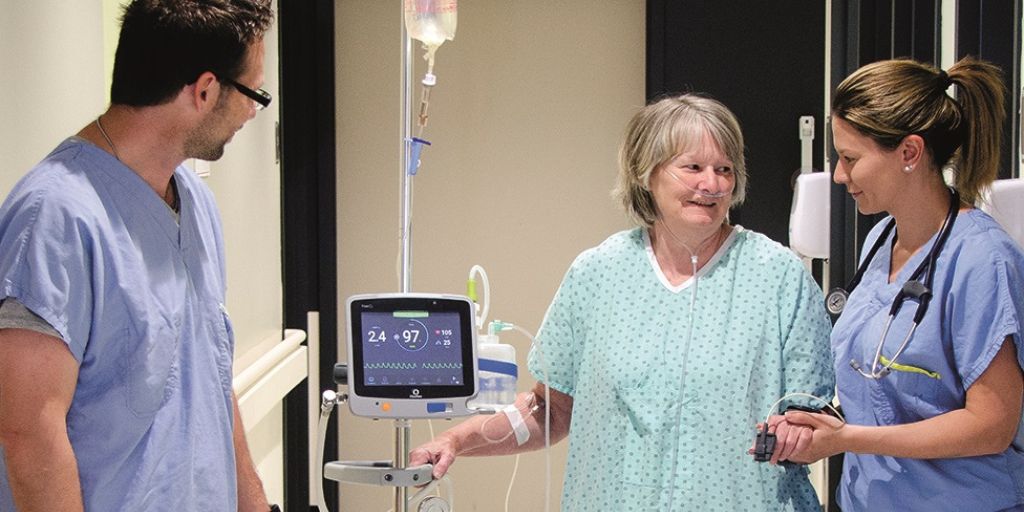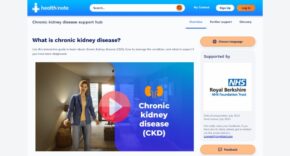
With the latest British Lung Foundation report on chronic obstructive pulmonary disorder (COPD) highlighting ‘a worrying picture of substandard care’ for patients in the UK, Vygon is urging clinicians to consider automated oxygen therapy to help those in acute respiratory distress.
Its FreeO2 monitor was used in clinical trials and studies among over 500 COPD patients and was found to improve optimum oxygen saturation levels by 56% compared to manual monitoring – and delivered a 21% cost saving[1].
In the study, FreeO2 was proven to limit complications such as hypoxia and hyperoxia and therefore reduced time COPD patients spent in hospital by 30%.
Designed by clinicians for use by acute and chronic patients receiving oxygen therapy – from infants to adults – the device monitors O2 need on demand, second by second, through an oximeter. It then delivers a titrated (self-adjusting) flow of oxygen to keep patients within saturation levels set by the healthcare professional.
Beverley Jones, Business Development Manager at leading medical device company Vygon, explains: “FreeO2 transforms oxygen therapy because it automates oxygen flow and removes the need for interventions to manage possible hyperoxia or hypoxia.
“We know that staff resource and adequate bed space are big issues in busy emergency departments across the UK, so removing the requirement to manually adjust a patient’s oxygen levels could make a huge difference by freeing up staff from a time-consuming process and easing pressure.
“The estimated annual cost of COPD to the NHS is over £800m, so reducing hospital stays for these patients by 30% is important, as this drives down costs without compromising care.”
A randomised trial comparing FreeO2 with manual oxygen titration in the respiratory ward of a university hospital found that length of stay dropped from 9.5 to 6.7 days[2] among the patients studied, who had a mean age of 72 and were all current or past smokers.
In the UK there are 1.4 million people with a diagnosis of COPD, however it is suspected that as many as two million people are undiagnosed and that 10% of people with the condition are only identified when they present to hospital in an emergency.
Patients with COPD who are hospitalised for an acute exacerbation often receive oxygen therapy as a part of their treatment, with episodes of both hypoxemia and hyperoxia reported.
An intuitive touch screen means healthcare staff can master FreeO2 quickly, adjusting oxygen flow rate between 0 and 20l/min. The technology allows patients to be weaned more quickly, reducing the need for patients to be transferred to Intensive Care.
The device can be used Trust-wide and across hospital departments including bedside care, ambulatory care and patients undertaking exercise endurance testing.
Beverley continues: “We’ve found that using FreeO2 lightens the load on staff, and they have that reassurance of compliance within clinical protocols around blood oxygen saturation (SpO2).
“What’s vitally important for us at Vygon is that it also improves patient comfort and safety.”
In a separate study of 50 COPD patients[3] undergoing walking endurance exercise, the use of FreeO2 enabled them to walk for significantly longer and resulted in more effective oxygenation.
[1] https://bmjopen.bmj.com/content/bmjopen/8/1/e018835.full.pdf FreeO2 generated savings of 20.7% of the per patient costs at 180 days. The improvement in the time spent at the target SpO2 was 56.3%.
[2] https://www.ncbi.nlm.nih.gov/pmc/articles/PMC5003517/ Table 4: Admission to hospital discharge (days)
[3] https://thorax.bmj.com/content/early/2021/10/16/thoraxjnl-2020-216509












